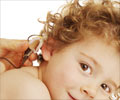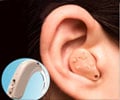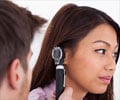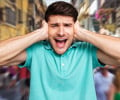- Occupational Noise Exposure - (https://www.osha.gov/sltc/noisehearingconservation/)
About
Among the various causes of hearing loss, noise-induced hearing loss is a significant occupational health hazard. Industrial audiology is a branch of audiology that deals with persons who face hearing problems due to noise at work place. Workers of certain industries and occupations who are at risk of noise-induced hearing loss include:
- Factories for garments, machinery and manufacturing items
- Construction
- Jobs involving loud music like musicians and orchestra conductors
- Mining industry
- Jobs involving the personnel to use drilling and other machinery
- Airline ground maintenance
- Truck, bus or train drivers
- Agriculture and farming with machinery
- Military, police and firefighters

Sources of non-occupational noise include high-volume music and church bands and exposure to noise from traffic during travel. Children may be exposed to high levels of noise from some toys that make noise; they may be affected by long term exposure to traffic noises.
Hearing loss due to exposure to loud noise is the major avoidable cause of permanent hearing loss. Frequent exposure to loud sounds for a long period of time can result in damage to hair cells of the inner ear that are the sensory receptive cells of sounds that pass on the information of sound to the auditory nerve. Loud sounds cause numbness to these hair cells, but if the period of exposure to these loud sounds is prolonged, the cells can be permanently damaged.
The World Health Organization defines disabling hearing impairment in adults when the permanent hearing threshold is 41 decibels or greater. The audiogram of a person with noise-induced hearing loss typically shows a dip in the high frequencies, while the hearing thresholds at lower frequencies may lie within the normal limits.
Damage to the hearing due to loud music or other types of noise exposure depends on the pitch, loudness and the duration of exposure to noise. However, since hearing loss is not painful, the gradual decrease in hearing sensitivity usually goes unnoticed. Some symptoms of noise-induced hearing loss include tinnitus, feelings of pressure or fullness in the ears and reduced speech discrimination in a group conversation.

Excessive noise exposure also causes other problems including the following:
- Tinnitus that can cause stress and depression if exists for long hours
- Increased cardiovascular disease risk due to stress
- Increased risk of accident and injury
- Psychological effects like irritability and depression
- Cognitive deficits like memory loss and impaired decision making, due to psychological disturbances
Industrial Audiology
Industrial audiology services are provided by audiologists who cater to the workers susceptible to occupational hazard of being exposed to loud noises. Detailed audiological assessment is carried out for the personnel and comprehensive and accurate reports on hearing and noise assessments are provided. Preventive measures of noise-induced hearing loss are advised and relevant measures are taken.
The role of an industrial audiologist in the occupational hearing conservation program includes designing, implementing and coordinating occupational and community hearing loss prevention programs. The hearing conservation program includes workplace noise sampling, educating workers and employers about noise levels and harm it can do to hearing, continuous hearing assessment programs, evaluating candidacy for hearing protection devices and evaluating the effectiveness of the noise control programs.

Identification and amelioration of noise-hazardous conditions: Identification of situations, environments and sources of loud sounds has to be done. Ideally, all worker exposures to noise should be controlled below at a level equivalent to 85 decibels with exposure duration not more than 8 hours to minimize occupational noise induced hearing loss. Levels of noise, sources of noise and the duration of the presence of noise have to be identified in the workplace. The noise may be continuous, variable, intermittent or impulsive and these patterns also may be responsible for damage to hearing.
Measuring workplace noise levels and conditions: Work place noise levels have to be measured using sound level meter or noise dosimeter to find out the exact levels of prevailing noise. Subjective indicators of potentially hazardous noise levels include the following conditions:

- Noise level inside is louder than a busy traffic noise.
- Raising voice to talk to people standing 3 feet away.
- Using higher volume levels of television or radio after being exposed to loud noise.
Audiometric evaluation, identification of hearing loss and monitoring: Continuous and ongoing evaluation of hearing testing and monitoring can help in identifying temporary threshold shifts in hearing caused by noise. A typical audiogram for a noise-induced hearing loss shows hearing loss in higher frequencies. Pre-employment hearing evaluation, base-line hearing evaluation, monitoring hearing test and action plan for hearing conservation are the basic steps taken. Inspection of ear canals and middle ear for presence of wax and infections need to be checked periodically.
Employee educational programs on prevention of exposure to loud noises: Seminars and workshops have to be conducted on regular basis to educate about how employees can protect themselves from being exposed to loud noises. The education and motivation sessions is held for both management and employees, so that everyone can understand that hearing conservation is a matter of high priority. Employees can also be encouraged to contribute by raising questions and concerns and also by pointing out the procedures that are not practically implementable. Alternatives can be suggested, too.
Engineering and administrative controls to prevent noise exposure: Engineering controls of noise levels include structural modifications of the place or replacing the noisy equipments with low-noise tools and machinery. Maintenance and lubrication of machinery and equipments can alleviate the noise to a certain extent. Distance or barriers between the sound source and the employee must be safe, or better still the noisy machinery can be enclosed in a cabin or room. Sound absorbers and sound proofing of the structures close to the noise production can be done to dampen the loud sounds.
Administrative controls include adjustments like:
- Operating noisy machines when less number of people are working
- Limited amount of time allotted to persons working close to noise source
- Providing quiet areas and intervals to help the hearing to recover
- Positioning of workers away from the source of noisy machines.
Hearing Protective Devices (HPD): A personal hearing protection device is a device that can reduce the level of sound entering the ear. Evaluation of a suitable hearing protective device has to be done. Some of the ear protective devices include earmuffs, ear plugs, ear canal caps and custom-made earplugs. The employee’s requirements, personal preferences, noise exposure levels, hearing ability, mobility and other work environment factors are some of the things to be considered while advising a suitable protective device. Ensuring that these devices protect hearing effectively requires constant monitoring with hearing tests, active participation of management, employees and the professionals involved in the hearing loss prevention program operators.

An effective hearing conservation program must be implemented by employers in industries where the workers are exposed to sounds more than 85 decibels for a period of 8 hours or more. The hearing conservation program must aim to prevent occupational hearing loss, preserve and protect hearing ability, educate the management and employees to take preventive measures seriously and conserve their hearing.













